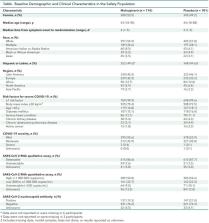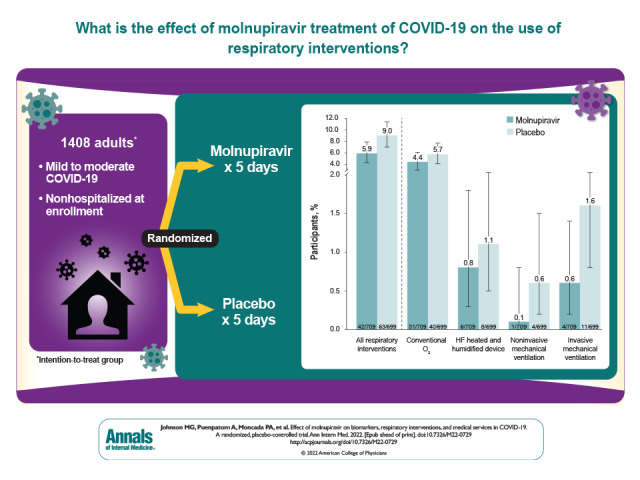The World Health Organization (WHO) on March 11, 2020, has declared the novel coronavirus (COVID-19) outbreak a global pandemic (1). At a news briefing, WHO Director-General, Dr. Tedros Adhanom Ghebreyesus, noted that over the past 2 weeks, the number of cases outside China increased 13-fold and the number of countries with cases increased threefold. Further increases are expected. He said that the WHO is “deeply concerned both by the alarming levels of spread and severity and by the alarming levels of inaction,” and he called on countries to take action now to contain the virus. “We should double down,” he said. “We should be more aggressive.” Among the WHO’s current recommendations, people with mild respiratory symptoms should be encouraged to isolate themselves, and social distancing is emphasized and these recommendations apply even to countries with no reported cases (2). Separately, in JAMA, researchers report that SARS-CoV-2, the virus that causes COVID-19, was most often detected in respiratory samples from patients in China. However, live virus was also found in feces. They conclude: “Transmission of the virus by respiratory and extrarespiratory routes may help explain the rapid spread of disease.”(3). COVID-19 is a novel disease with an incompletely described clinical course, especially for children. In a recente report W. Liu et al described that the virus causing Covid-19 was detected early in the epidemic in 6 (1.6%) out of 366 children (≤16 years of age) hospitalized because of respiratory infections at Tongji Hospital, around Wuhan. All these six children had previously been completely healthy and their clinical characteristics at admission included high fever (>39°C) cough and vomiting (only in four). Four of the six patients had pneumonia, and only one required intensive care. All patients were treated with antiviral agents, antibiotic agents, and supportive therapies, and recovered after a median 7.5 days of hospitalization. (4). Risk factors for severe illness remain uncertain (although older age and comorbidity have emerged as likely important factors), the safety of supportive care strategies such as oxygen by high-flow nasal cannula and noninvasive ventilation are unclear, and the risk of mortality, even among critically ill patients, is uncertain. There are no proven effective specific treatment strategies, and the risk-benefit ratio for commonly used treatments such as corticosteroids is unclear (3,5). Septic shock and specific organ dysfunction such as acute kidney injury appear to occur in a significant proportion of patients with COVID-19–related critical illness and are associated with increasing mortality, with management recommendations following available evidence-based guidelines (3). Novel COVID-19 “can often present as a common cold-like illness,” wrote Roman Wöelfel et al. (6). They report data from a study concerning nine young- to middle-aged adults in Germany who developed COVID-19 after close contact with a known case. All had generally mild clinical courses; seven had upper respiratory tract disease, and two had limited involvement of the lower respiratory tract. Pharyngeal virus shedding was high during the first week of symptoms, peaking on day 4. Additionally, sputum viral shedding persisted after symptom resolution. The German researchers say the current case definition for COVID-19, which emphasizes lower respiratory tract disease, may need to be adjusted(6). But they considered only young and “normal” subjecta whereas the story is different in frail comorbid older patients, in whom COVID 19 may precipitate an insterstitial pneumonia, with severe respiratory failure and death (3). High level of attention should be paid to comorbidities in the treatment of COVID-19. In the literature, COVID-19 is characterised by the symptoms of viral pneumonia such as fever, fatigue, dry cough, and lymphopenia. Many of the older patients who become severely ill have evidence of underlying illness such as cardiovascular disease, liver disease, kidney disease, or malignant tumours. These patients often die of their original comorbidities. They die “with COVID”, but were extremely frail and we therefore need to accurately evaluate all original comorbidities. In addition to the risk of group transmission of an infectious disease, we should pay full attention to the treatment of the original comorbidities of the individual while treating pneumonia, especially in older patients with serious comorbid conditions and polipharmacy. Not only capable of causing pneumonia, COVID-19 may also cause damage to other organs such as the heart, the liver, and the kidneys, as well as to organ systems such as the blood and the immune system. Patients die of multiple organ failure, shock, acute respiratory distress syndrome, heart failure, arrhythmias, and renal failure (5,6). What we know about COVID 19? In December 2019, a cluster of severe pneumonia cases of unknown cause was reported in Wuhan, Hubei province, China. The initial cluster was epidemiologically linked to a seafood wholesale market in Wuhan, although many of the initial 41 cases were later reported to have no known exposure to the market (7). A novel strain of coronavirus belonging to the same family of viruses that cause severe acute respiratory syndrome (SARS) and Middle East respiratory syndrome (MERS), as well as the 4 human coronaviruses associated with the common cold, was subsequently isolated from lower respiratory tract samples of 4 cases on 7 January 2020. On 30 January 2020, the WHO declared that the SARS-CoV-2 outbreak constituted a Public Health Emergency of International Concern, and more than 80, 000 confirmed cases had been reported worldwide as of 28 February 2020 (8). On 31 January 2020, the U.S. Centers for Disease Control and Prevention announced that all citizens returning from Hubei province, China, would be subject to mandatory quarantine for up to 14 days. But from China COVID 19 arrived to many other countries. Rothe C et al reported a case of a 33-year-old otherwise healthy German businessman :she became ill with a sore throat, chills, and myalgias on January 24, 2020 (9). The following day, a fever of 39.1°C developed, along with a productive cough. By the evening of the next day, he started feeling better and went back to work on January 27. Before the onset of symptoms, he had attended meetings with a Chinese business partner at his company near Munich on January 20 and 21. The business partner, a Shanghai resident, had visited Germany between January 19 and 22. During her stay, she had been well with no signs or symptoms of infection but had become ill on her flight back to China, where she tested positive for 2019-nCoV on January 26. This case of 2019-nCoV infection was diagnosed in Germany and transmitted outside Asia. However, it is notable that the infection appears to have been transmitted during the incubation period of the index patient, in whom the illness was brief and nonspecific. The fact that asymptomatic persons are potential sources of 2019-nCoV infection may warrant a reassessment of transmission dynamics of the current outbreak (9). Our current understanding of the incubation period for COVID-19 is limited. An early analysis based on 88 confirmed cases in Chinese provinces outside Wuhan, using data on known travel to and from Wuhan to estimate the exposure interval, indicated a mean incubation period of 6.4 days (95% CI, 5.6 to 7.7 days), with a range of 2.1 to 11.1 days. Another analysis based on 158 confirmed cases outside Wuhan estimated a median incubation period of 5.0 days (CI, 4.4 to 5.6 days), with a range of 2 to 14 days. These estimates are generally consistent with estimates from 10 confirmed cases in China (mean incubation period, 5.2 days [CI, 4.1 to 7.0 days] and from clinical reports of a familial cluster of COVID-19 in which symptom onset occurred 3 to 6 days after assumed exposure in Wuhan (10-12). The incubation period can inform several important public health activities for infectious diseases, including active monitoring, surveillance, control, and modeling. Active monitoring requires potentially exposed persons to contact local health authorities to report their health status every day. Understanding the length of active monitoring needed to limit the risk for missing infections is necessary for health departments to effectively use resources. A recent paper provides additional evidence for a median incubation period for COVID-19 of approximately 5 days (13). Lauer et al suggest that 101 out of every 10 000 cases will develop symptoms after 14 days of active monitoring or quarantinen (13). Whether this rate is acceptable depends on the expected risk for infection in the population being monitored and considered judgment about the cost of missing cases. Combining these judgments with the estimates presented here can help public health officials to set rational and evidence-based COVID-19 control policies. Note that the proportion of mild cases detected has increased as surveillance and monitoring systems have been strengthened. The incubation period for these severe cases may differ from that of less severe or subclinical infections and is not typically an applicable measure for those with asymptomatic infections In conclusion, in a very short period health care systems and society have been severely challenged by yet another emerging virus. Preventing transmission and slowing the rate of new infections are the primary goals; however, the concern of COVID-19 causing critical illness and death is at the core of public anxiety. The critical care community has enormous experience in treating severe acute respiratory infections every year, often from uncertain causes. The care of severely ill patients, in particular older persons with COVID-19 must be grounded in this evidence base and, in parallel, ensure that learning from each patient could be of great importance to care all population,



